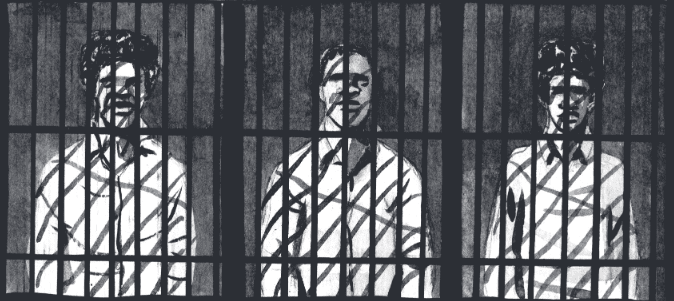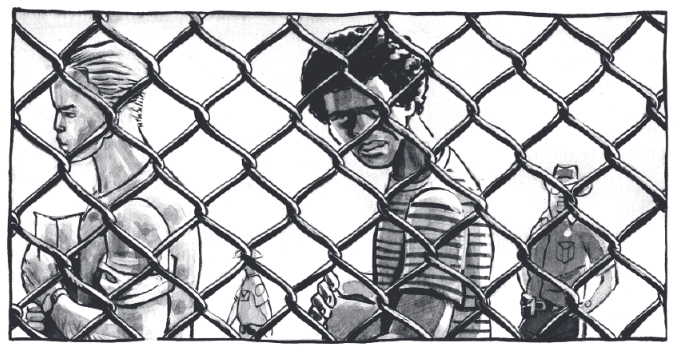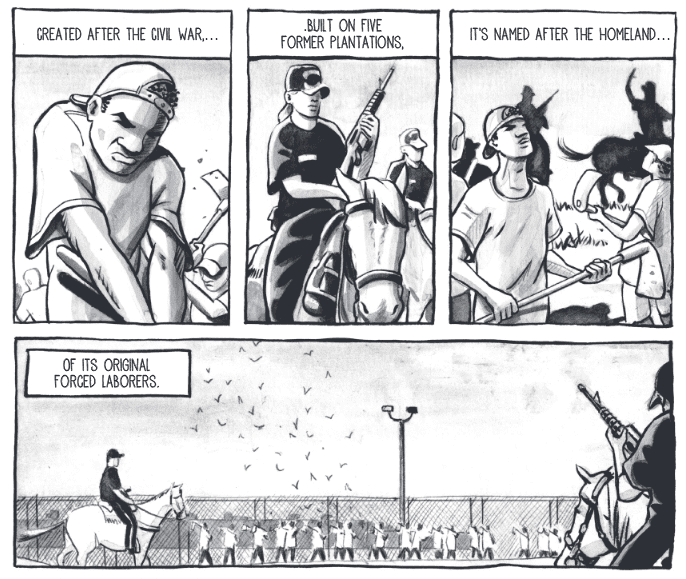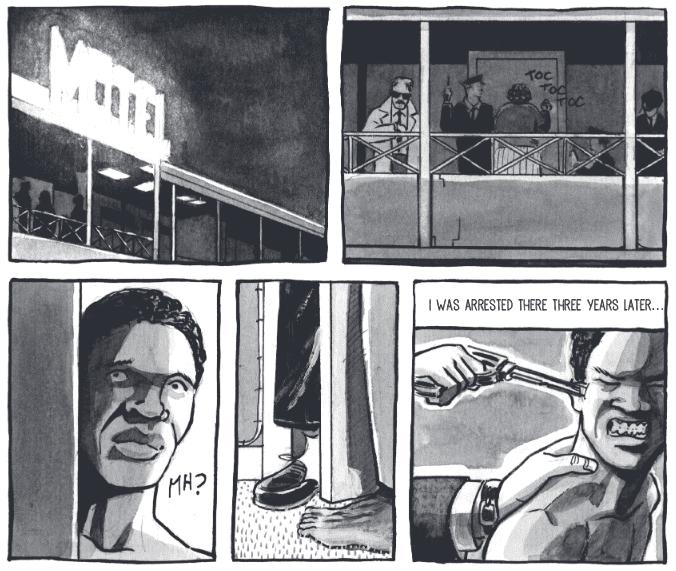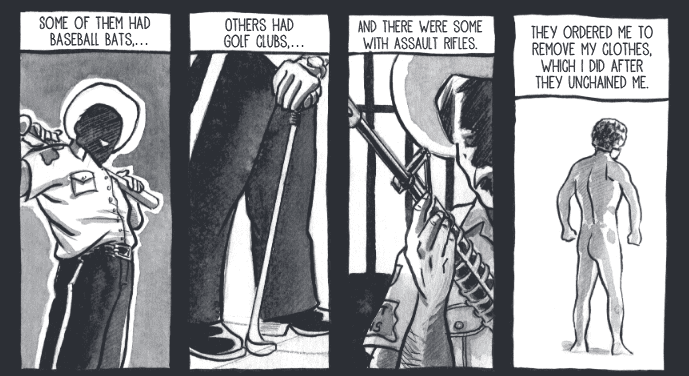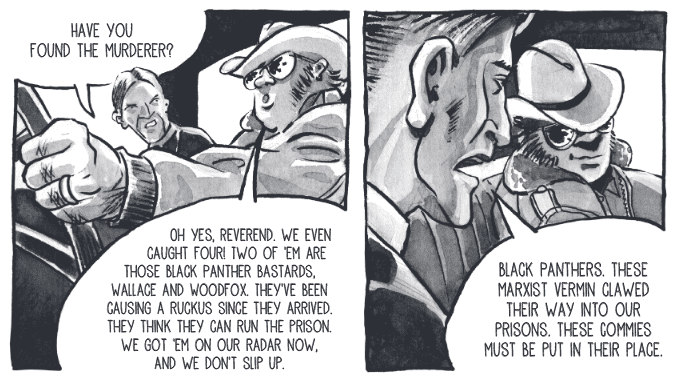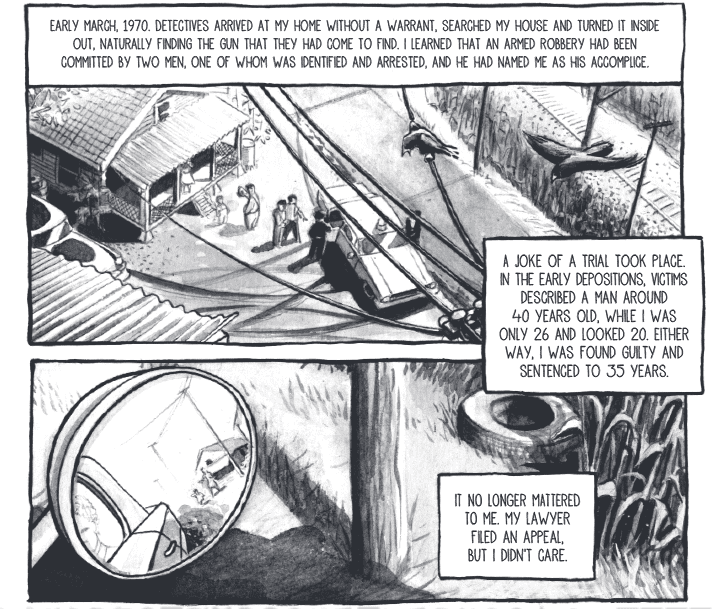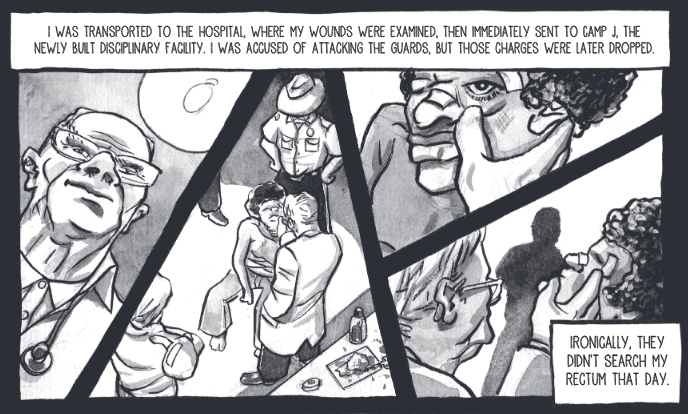Every cause needs heroes.
Or at least protagonists. A strong central figure, or figures, can be invaluable in bringing a message to a public obsessed with narrative. No matter how big an issue, or how rampant a problem, a movement is most effective if it’s presented from a single focal point, giving us somebody to root for.
Panthers in the Hole is a graphic novel, originally written in French, about the true story of three prison inmates and their experience in solitary confinement at Louisiana State Penitentiary. The novel is authored by Bruce and David Cénou (who, in conjunction, will henceforth be referred to as “the Cénous”), with the former providing the script, and the latter taking on the illustrations.
For me, the biggest take-away from this book is that while the novel is the first-person accounts of these three men, Panthers isn’t just about them. The Cénous use the stories of Albert Woodfox, Robert King, and Herman Wallace at Angola Prison to explore the much broader narrative of the penal system’s mistreatment of African Americans. They set their sights on Angola because it’s an easy target. It is an extreme example that is emblematic of a larger issue. Angola represents the nadir of the American prison system.
The Panthers tell three separate, appalling stories about their treatment at Angola, but the Cénous don’t seem to show any editorial/artistic distinction between them, nor do they express any doubt over the validity of these claims. Not that I don’t believe these stories (in fact, over the course of reading the book and doing some light research, I’ve become quite convinced that the word of the Angola Three is pretty much gospel). But they don’t give us a sense of the Panthers’ perspectives, or how their personalities and points of view play into the narrative. Rather than seeing the men’s stories through their eyes, we are being given a well-drawn, sharply paced, straight illustration job of the Panthers’ report on their treatment at the hands of the prison system. It’s a documentary-cum-comic book.
This approach is actually pretty fitting. After all, Panthers is a book with a message—one supported by Amnesty International no less—and so they certainly wouldn’t want the specter of doubt, or an undesirable personality, getting in the way of their exposé of the American penal system. What I like about this is that the Cénous don’t presume to speak for the Panthers, but instead choose to speak to the issue itself, which is clearly bigger than the Angola Three.
I said before that the book is like a documentary in the form of a comic book, but make no mistake—it is very much a comic book. The narrative is told in as simple and direct a manor as the subject matter will allow. Clocking in at just over 100 pages, it briskly takes us through the stories of the men’s origins, their many adversities, and their struggle to overcome them. Just like the artwork, and the racial divide that the book displays, the clear-cut narrative is entirely black-and-white. The heroes are headstrong and lionhearted, while the villains are fat and stupid. But, for what the book sacrifices in depth of character, it gains in pure communicability. We understand exactly what the authors are trying to get across.
The comic book aesthetic is equally apparent in the artwork. David Cénou eschews impressionism and fine detail in favor of Jack Kirby-style power and clarity. He achieves this with some first-rate brushwork, and a creative use of ink wash. I was particularly impressed by Cénou’s establishing panels. The book may be filled with montages in order to tell the stories quickly, but the Cénous know what their set pieces are, and David displays a keen ability to to set up the setting, emotion, and point of view of each scene in the first panel alone.
A quick word on the translation. The weird dialogue and awkward narration that is so often seen in translated comics is thankfully not found here. With the exception of a wonky transition or two, Olivia Taylor Smith’s translation seems to be bang-on.
In summary, while the Cénous do make the Panthers’ story into a comic book, they don’t turn it into a cartoon. The horrific abuse and misuse of power faced by these men is on full display here, and I learned a lot from reading this book. Panthers in the Hole may not offer an intimate look at these three men who have suffered injustice at the hand of the penal system, but it does give you a fascinating overview of an important issue that continues to be very relevant today. Though the book is successful in presenting these stories in an exciting and engaging way, I think that its greatest achievement is that it provides the movement for change with three dynamic hero figures. These men are brave, admirable role models, which, for a cause seeking to gain public support for convicted prisoners, is something that is sorely needed.

